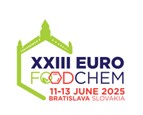Vedecký časopis - archív
Journal of Food and Nutrition Research
Súhrny čísla 4 / 2016
Generalić Mekinić, I. – Skroza, D. – Ristovski, B. – Ljubenkov, I. – Bikić, I. – Svilović, S. – Banović, M. – Bocevska, M. – Katalinić, V.
Anthocyanidins in Babica, Ljutun and Crljenak Kaštelanski grapes, and kinetic of their degradation under different storage conditions
Journal of Food and Nutrition Research, 55, 2016, č. 4, s. 294-302
Ivana Generalić Mekinić, Department of Food Technology and Biotechnology, Faculty of Chemistry and Technology, University of Split, Ruđera Boškovića 35, HR-21000 Split, Croatia. Tel.: +385 21 558217, fax: +385 21 329461, e-mail: gene@ktf-split.hr
Received 8 June 2016; 1st revised 11 August 2016; 2nd revised 20 September 2016; accepted 19 October 2016; published online 10 November 2016
Súhrn: Profiles of anthocyanidins (delphinidin, cyanidin, malvidin, pelargonidin and peonidin concentrations) of the skin extracts from autochthonous Croatian (Dalmatian) red grape varieties Babica, Ljutun and Crljenak Kaštelanski were analysed using high-performance liquid chromatography. Identification and quantification of aglycones after acid hydrolysis of the anthocyanins was performed using anthocyanidin standards. In all extracts, malvidin was the major anthocyanidin (ranging from 0.2237 mg·l-1 to 0.2738 mg·l-1), while the extracts of Ljutun and Crljenak Kaštelanski also contained high amounts of delphinidin. Pelargonidin derivatives were detected in all samples and their concentration ranged from 0.0359 mg·l-1 to 0.0371 mg·l-1. The concentrations of total monomeric anthocyanins and their changes during 70 days of storage under different conditions (at room temperature exposed to the sunlight, at room temperature in the dark, and at +4 °C protected from light) were measured by the pH-differential method. Degradation rates of total monomeric anthocyanins in all extracts exposed to light followed the first order reaction kinetics, and after 70 days there were no monomeric forms in them. The highest degree of anthocyanins stability was recorded for the samples that were kept at +4 °C and protected from light, where only 5–8% of these compounds were degraded.
Kľúčové slová: anthocyanin degradation; light; temperature; kinetic reaction; high-performance liquid chromatography
Na stiahnutie:
jfnr201639.pdf (PDF, 814.69 Kb, 1107x)










